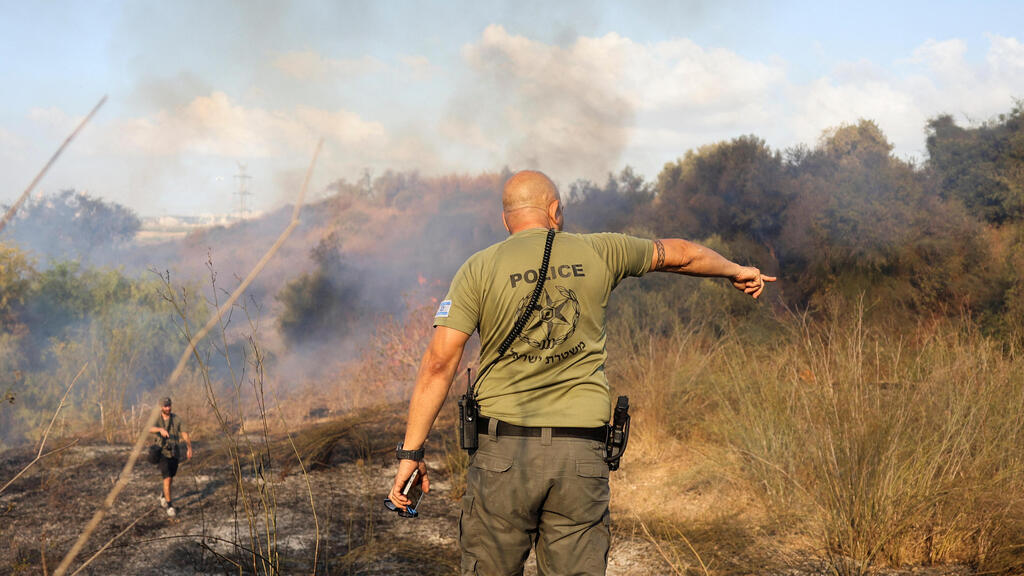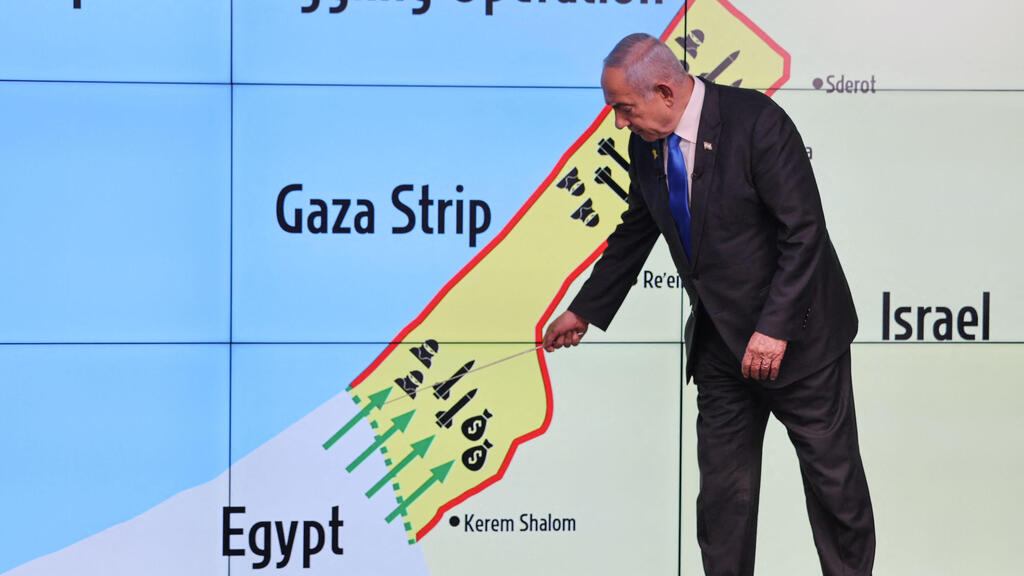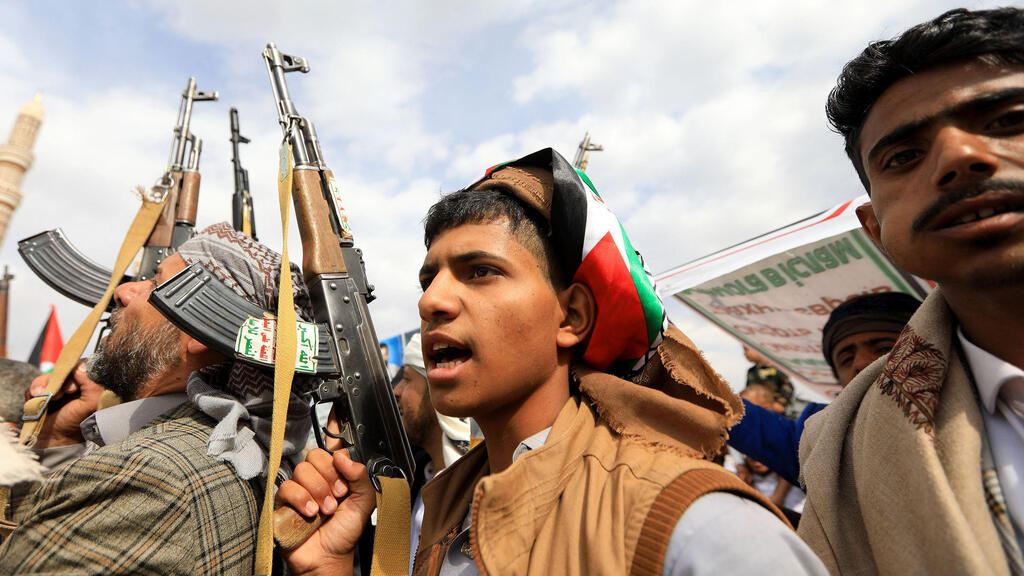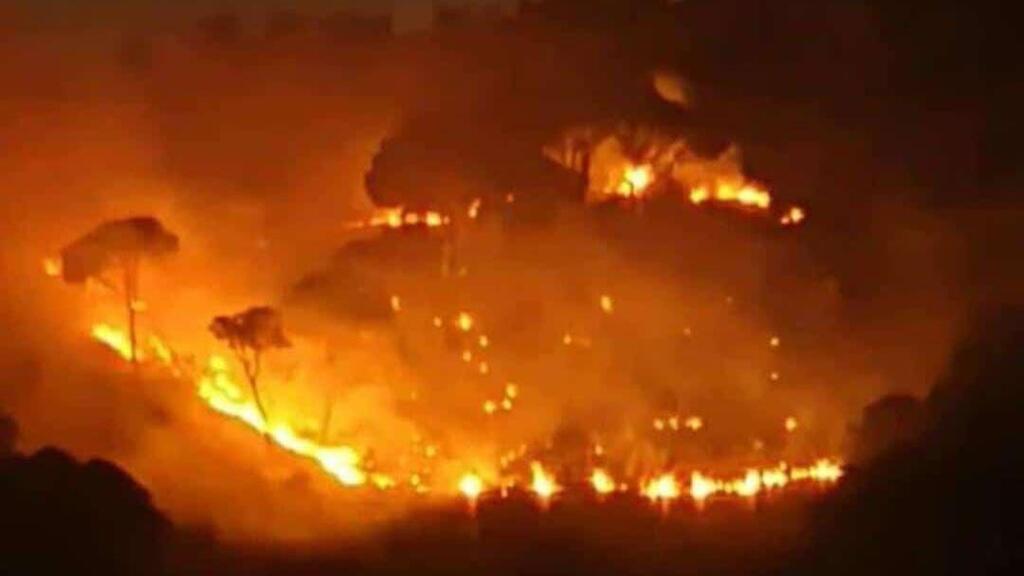A missile fired from Yemen landed in central Israel on Sunday morning, causing no major injuries but reminding the country that its multi-front war was still very much active almost a year after it began.
Yemen’s Iranian-backed Houthi rebels were behind the attack, saying they used an upgraded ballistic missile to attack Israel. Since the beginning of the Israel-Hamas war in October of last year, they have repeatedly fired drones and missiles toward Israel, the majority of them intercepted outside of Israeli territory.
5 View gallery


Brush fire caused by the intercept of a Houthi missile targeting Israel
(Photo: Ronen Zvulun / Reuters)
The purpose of their attacks is in line with an Iranian directive that it and its allies have been acting against Israel in solidarity with the Palestinian cause.
This is not the only open and active front of the current war, which has spanned from Yemen to Gaza through Syria, Iraq, Lebanon, and Iran.
Also on Sunday morning, tens of missiles and drones were fired towards northern Israel by another Iranian proxy, the Lebanese-based Hezbollah terrorist organization. There were no injuries in what has become a daily occurrence.
Over the weekend, Israeli military forces operating in the West Bank city of Tul Karem uncovered an “underground complex,” sparking fears that the tunnels aimed at attacking Israel in Gaza and Lebanon are also being duplicated in an arena close to central Israel.
In another weekend incident, Hamas terrorists fired rockets at the southern Israeli city of Ashkelon after months in which the city had not been targeted.
In late July, after the assassinations of Hezbollah senior military commander Fuad Shukr, for which Israel took responsibility, and Hamas leader Ismail Haniyeh, for which Israel did not take responsibility but is believed to be behind, there was a feeling that an all-out regional war that could possibly see a direct confrontation between Israel and Iran was closer than ever. Israel was on high alert for several weeks, and while the feeling of immanency has since subsided, there is still an open account for settling between the rivals.
The summer was also eventful between Israel and the Houthi rebels. In July, an Iranian-made drone launched by the Houthis killed one Israel in Tel Aviv, wounding 10 others. Israel responded with air strikes on the Houthi-held port of Hodeida. The Houthis vowed revenge, a score it appeared to settle this Sunday morning. Israeli media reported Sunday that an Israeli counter-retaliation was to be expected after the latest incident.
International community must stop Houthi threat in Red Sea
“The Houthis have become a strategic, but not existential threat, to Israel and other countries in the region,” Shaul Bartal, a research associate at the Begin-Sadat Center for Strategic Studies and the Universidade de Lisboa in Portugal said. “The removal of their hold on the Red Sea needs to be an international mission.”
There have been countless maritime incidents against dozens of merchant and naval vessels in the region, menacing the global economy.
The weekend reverberations of the almost year-long war put into question Israel’s strategy, as it appears to be dragging itself in the mud of an open-ended conflict with Iranian proxies on all of its borders. The lengthy conflict has also led to major discord in the relationship between Israel and the US, with the White House increasingly critical of Israel’s handling of the war.
“Without a major breakthrough in Gaza, there will be no breakthrough in the other arenas,” Professor Kobi Michael from the Misgav Institute for National Security and Zionist Strategy and the Institute of National Security Studies (INSS) said.
According to Michael, Israel needs to cement its presence in Gaza by establishing military rule in the territory as a means of eradicating Hamas.
“As long as Hamas has the responsibility and control over the supply of humanitarian aid to the civilian population, this creates the impression that Hamas is still the governing power and will remain so after the war,” he explained. “This can only be changed with a permanent Israeli military presence, making it responsible for the distribution of aid while preventing Hamas from regrouping.”
This is a major point of contention between Israel and the US, as the Americans also see Gaza as the path to change in the region but in a very different way.
“The American policy is very problematic for Israel and includes restraining it,” said Michael. “This is based on a belief that the most important thing is to reach a cease-fire in Gaza, which they see as the cornerstone to their strategic vision that will placate Iran, bring to a cease-fire with Hezbollah, and facilitate a new regional architecture which includes normalization between Israel and Saudi Arabia.”
“These are daydreams the Americans are rather enslaved to,” he added.
The result is immense American pressure on Israel in recent weeks to reach a cease-fire agreement that will also see at least a partial release of the 101 Israeli hostages still in Hamas captivity since October. There is also increasing public pressure on the Israeli government to agree to a deal, with a heated debate on its price, which would likely include, among other concessions, the withdrawal of Israeli forces from Gaza.
“Israel has not made the strategic decision yet about whether it is to move forward with a deal, a deal that aside from the release of some of the hostages is somewhat a deal of Israeli capitulation,” said Bartal.
5 View gallery


Prime Minister Benjamin Netanyahu announces Israel must remain on the Philadelphi Corridor
(Photo: Abir Sultan / AFP)
Israeli Prime Minister Benjamin Netanyahu insists on controlling a critical border crossing between Gaza and Egypt, one that enabled Hamas’ armament in recent decades.
“It is clear that Egypt, knowingly or not, allowed for a massive amount of arms to enter Gaza,” Bartal said. “Israel cannot give this up, and it is clear now it must hold at least some territory as a buffer zone that will give it forewarning of a possible attack. The thought that Israel could rely on its supposedly stellar intelligence to thwart such an attack was shattered in October.”
This has reportedly been one of the dealbreakers preventing an agreement with the terrorist organization. However, it is unclear how realistic the prospects of a deal between the warring sides actually were.
Until Israel makes the decision, it pauses at a critical intersection in its war on Hamas, looking at its other enemies.
One of Israel’s main tasks is to resecure its border with Lebanon, where Hezbollah is constantly challenging its sovereignty. Hezbollah joined Hamas’ effort to attack Israel a day after the Gaza-based terrorist organization carried out its surprise offensive.
In an attempt to avoid similar scenes of massive civilian casualties, Israel immediately evacuated tens of thousands of residents from their homes on the border. They have yet to return a year later, and many have already resettled elsewhere. In addition, Hezbollah has widened its scope of missile fire, targeting residential areas deeper in Israel, areas that have not been evacuated.
Israel on cusp of change in strategy in the face of Hezbollah
In the meanwhile, the Israeli Defense Forces (IDF) have significantly downsized the presence of its ground forces in Gaza, indicating it is moving focus elsewhere. The IDF has also conducted numerous exercises in preparation for a larger offensive in Lebanon, with senior defense officials warning such an attack is imminent.
“We are on the cusp of a change in Israel’s strategy in which it will shift the weight towards the northern border,” said Bartal. “Israel is becoming bolder and attacking more, combined with the public growing increasingly impatient.”
“The current situation will not continue,” said Netanyahu as he opened the weekly cabinet meeting on Sunday.
Foreign media reports over the weekend suggested Israeli special forces conducted a rare raid in Syria, which targeted an Iranian-built underground Hezbollah missile production facility. According to those reports, at least 18 people were killed, and 40 others were injured.
Until now, Israel and Hezbollah have exchanged limited, but still significant, fire with unwritten and loosely agreed-upon terms to keep the civilian population outside of the conflict. This has left the Israeli government with a major dilemma of how to return its citizens to live in an area under the constant threat of Hezbollah, a far more formidable enemy than Hamas on its southern border.
“The equation in the north must be changed,” said Michael. “The reality is that Israel is currently unable to exercise its sovereignty there. Only a massive offensive move can change this.”
Michael added Israel would need broad support from the US and other Western allies for such an operation, support that would include active military action, perhaps even against Iran directly.
American-led attempts to reach a diplomatic settlement have failed so far.
Israel also continues to battle incessant efforts to attack it from the West Bank, where Hamas and other Palestinian factions are trying hard to challenge the Jewish state from an additional front. Several car bombs were found earlier this month, indicating an escalation in those efforts.
The Israeli army has operated intensely in recent weeks, conducting daily raids that have killed tens of Palestinians and arresting dozens more. In addition, A Turkish-American aid worker was shot dead by Israeli forces last week as she was protesting Israeli settlements in the West Bank. The incident added more tension to the already fraught relations between Washington and Jerusalem.
A look at the map of threats and violence shows that a regional war is already underway. However, its intensity could easily increase and will likely do so before a new order is achieved.
Article reprinted with the permission of the Media Line




